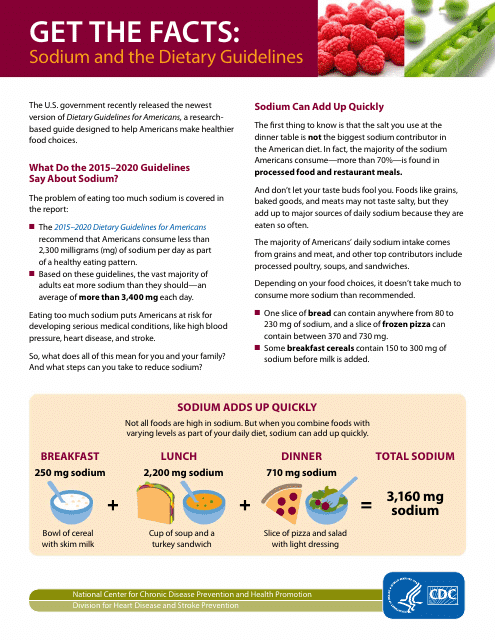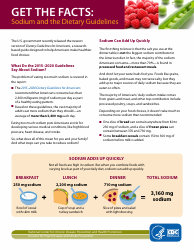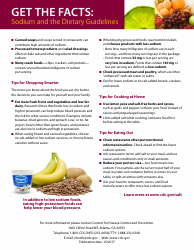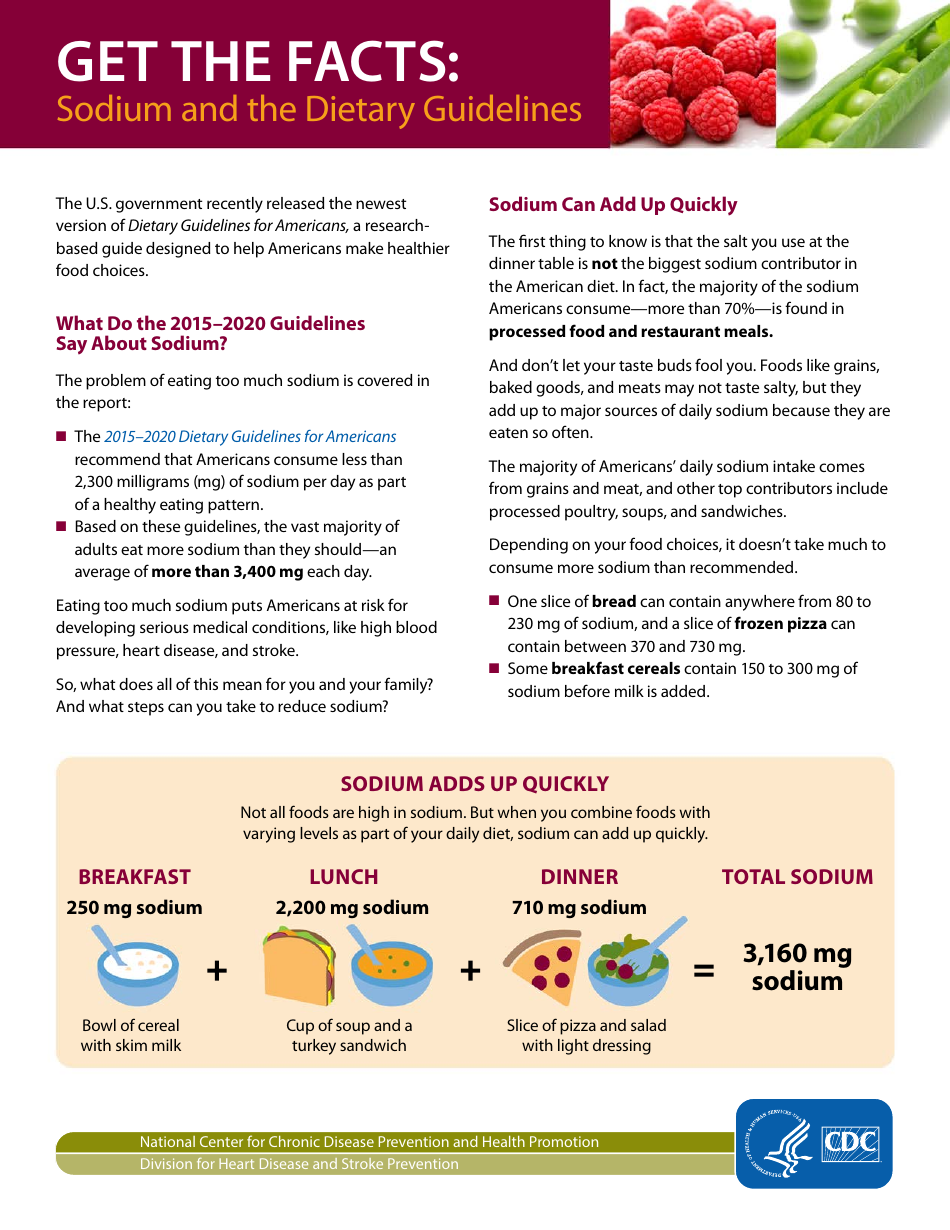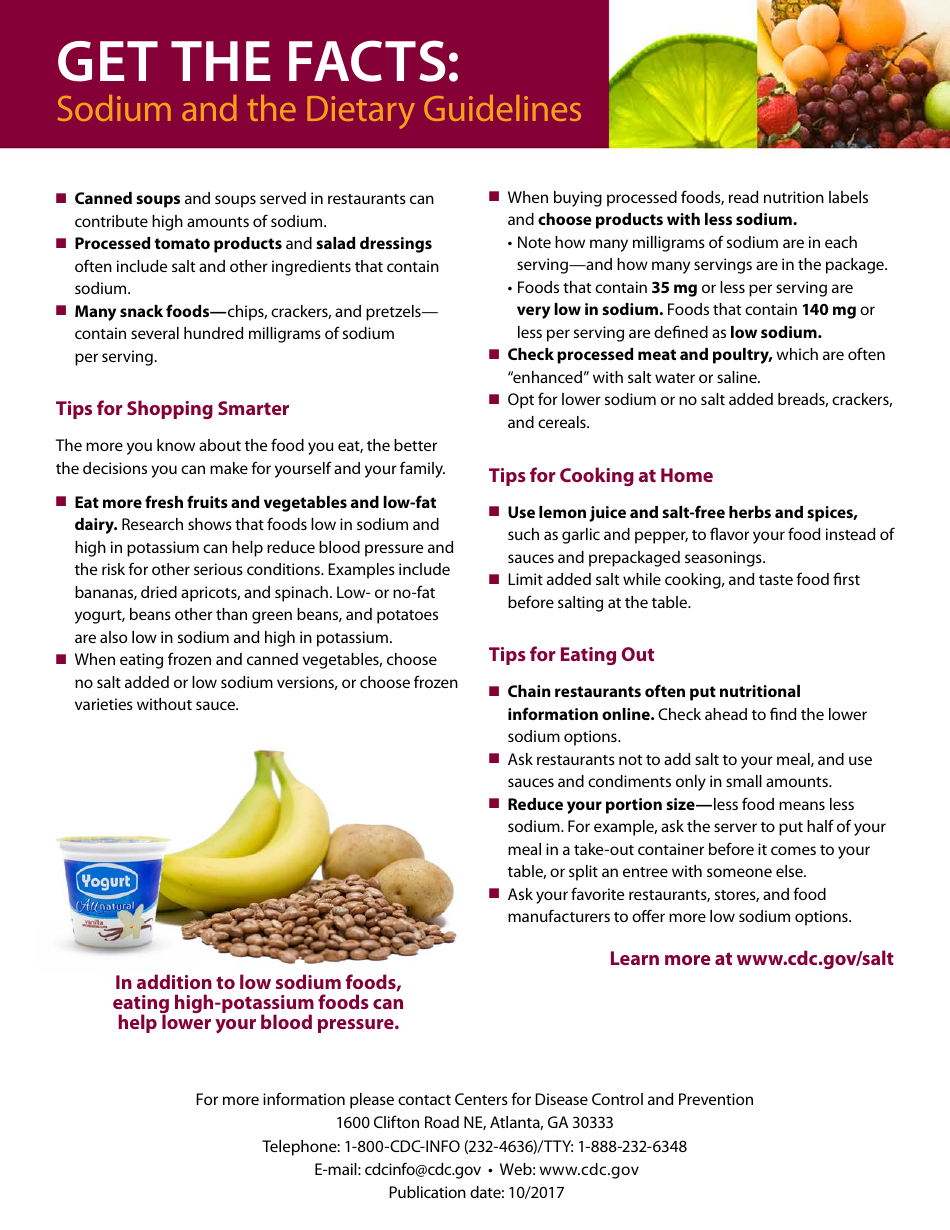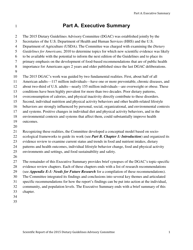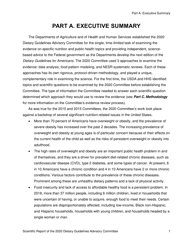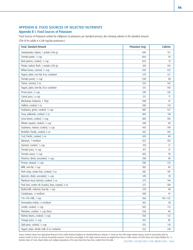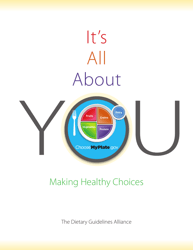Get the Facts: Sodium and the Dietary Guidelines
Get the Facts: Sodium and the Dietary Guidelines is a 2-page legal document that was released by the U.S. Department of Health and Human Services and used nation-wide.
FAQ
Q: What are the Dietary Guidelines?
A: The Dietary Guidelines are science-based recommendations for healthy eating issued by the U.S. government.
Q: Why are the Dietary Guidelines important?
A: The Dietary Guidelines provide information on how to make healthy food choices to promote overall health and prevent chronic diseases.
Q: What is sodium?
A: Sodium is a mineral that is found in salt and many other foods. It is an essential nutrient, but excessive sodium intake can have negative health effects.
Q: How much sodium should I consume?
A: The Dietary Guidelines recommend limiting sodium intake to less than 2,300 milligrams per day for adults.
Q: Why is excessive sodium intake a concern?
A: Excessive sodium intake is linked to high blood pressure, which increases the risk of heart disease and stroke.
Q: What are some common sources of sodium?
A: Processed and prepared foods, such as canned soups, deli meats, and fast food, are often high in sodium.
Q: How can I reduce my sodium intake?
A: You can reduce your sodium intake by reading food labels, choosing low-sodium options, and cooking at home using fresh ingredients.
Q: Are there ways to add flavor to food without relying on salt?
A: Yes, you can use herbs, spices, and other seasonings to add flavor to your food without relying on salt.
Form Details:
- The latest edition currently provided by the U.S. Department of Health and Human Services;
- Ready to use and print;
- Easy to customize;
- Compatible with most PDF-viewing applications;
- Fill out the form in our online filing application.
Download a printable version of the form by clicking the link below or browse more legal forms and templates provided by the issuing department.
